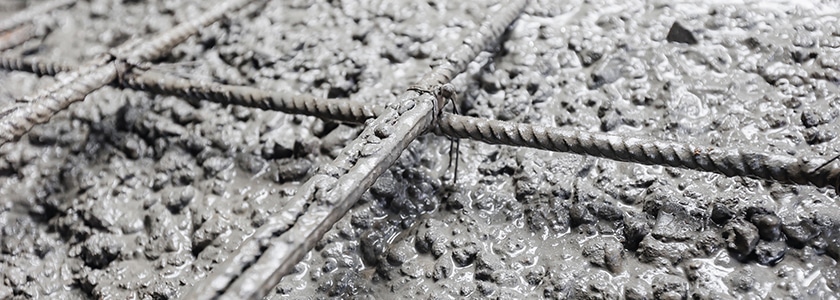All lifting equipment must work from a solid base if it is to safely and successfully do its job. With an arm that extends far from its centre of gravity, jib cranes depend on their foundations more than most cranes.
Do you need a concrete foundation for jib cranes? Read on to find out.
Types of jib crane installation
Jib cranes can be installed in a number of configurations, but the two most common are:
- Column-mounted jib cranes: These jib cranes feature an arm that extends out from a freestanding column, which is connected firmly to the ground.
- Wall-mounted jib cranes: These jib cranes are connected to the structure of your building, usually a wall or pillar.
Do I need a jib crane foundation?
If you choose to install a wall-mounted crane in your facility, you won’t need a concrete jib crane foundation: the crane will simply bolt onto the frame of your building. You will need to check with a structural engineer to make sure that the building – and by extension, the building’s foundations – are capable of taking the weight and stress that will be applied by the fully-loaded jib crane.
Column-mounted cranes, meanwhile, will need to be firmly attached to the ground. There are two main ways to do so: pouring a concrete foundation, or bolting the column-mounted crane to an existing concrete slab (sometimes referred to as a ‘foundationless’ jib crane).
Most warehouses, factories, distribution centres and facilities have concrete flooring, so simply bolting a column-mounted jib crane onto the floor, without the need to pour a new foundation, may well be an option. It will just come down to whether your floor is capable of handling the load.
Understanding jib crane foundation requirements
Concrete is a strong material, but very brittle. If it is put under too much stress or tension it can crack and fail, which can form a significant safety hazard.
You’ll need to work out whether your current floor can handle the weight and stress that a fully loaded column-mounted jib crane will place it under. The crane manufacturer may state that you are responsible for determining concrete strength, in which case you may need to get the opinion of a structural engineer.
A few other key factors to consider when analysing jib crane foundation design and the suitability of your concrete floor include:
- Steel reinforcements: The structural engineer may state the minimum spacing, thickness and diameter of steel reinforcements within the concrete, as well as the location and elevation of that steel.
- Space requirements: The structural engineer may specify the size of the foundation that the crane requires, including length, width and depth.
- Distance from cracks/seams: The manufacturer may state a minimum distance that the jib crane can be installed from joins, seams and potential failure points in the concrete.
- Bolt strength: You may need to install the crane using bolts with a pull-out strength above a certain threshold.
All of these factors need to be confirmed by a Chartered Professional Engineer.
Helping New Zealand manufacturers safely solve their lifting challenges with the best local and global solutions
At Stratalign we’ve spent years helping Kiwi businesses identify and secure the lifting equipment they need. Our team has the knowledge and expertise to identify the ideal jib crane for you, and install it in a way that allows you to work efficiently, productively, and most important of all, safely.
Our solutions are customised to your specific needs and wants, and are designed to last. We offer a complete range of jib cranes, all of which are certified to AS 1418.1.





